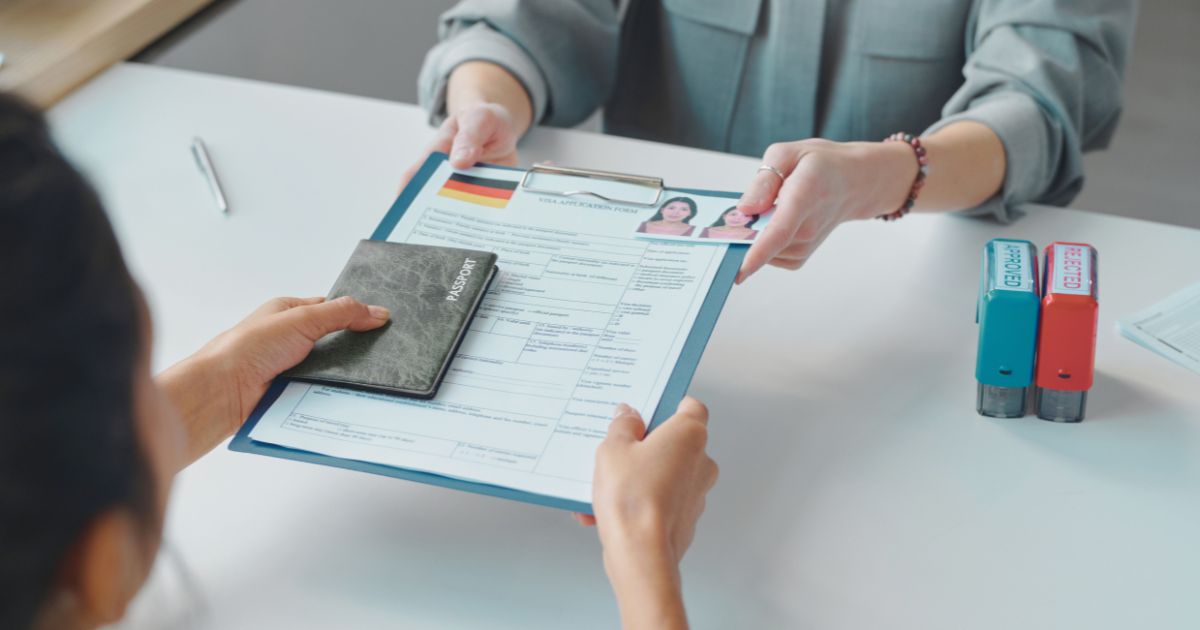The Italy digital nomad visa opens the door for remote workers to live and work legally in one of the most beautiful countries in the world. From picturesque Tuscan villas to vibrant Roman piazzas, Italy offers an unmatched lifestyle for digital nomads looking to combine productivity with cultural exploration.
This visa is designed for non-EU citizens who work remotely, whether as freelancers, entrepreneurs, or employees of foreign companies. In this guide, we’ll explain how to apply for the Italy digital nomad visa, the key requirements you’ll need to meet, and tips to make the process smooth and stress-free.
What is the Italy digital nomad visa?

Launched to attract remote professionals, Italy’s digital nomad visa enables individuals to stay in the country while working for a foreign employer or running their own business.
Unlike a tourist visa, this permit grants you access to long-term residency, making it ideal for those who want to immerse themselves in Italian life while staying productive.
🌟 Related Resource: explore detailed information on the Italy digital nomad visa.
Who qualifies for the Italy digital nomad visa?
The visa is designed for remote workers meeting specific criteria. Here’s what you’ll need to qualify:
1. Proof of remote work
To qualify for the Italy digital nomad visa, you must prove that your income comes from outside Italy. This means showing that you work for a foreign employer, own a business registered in another country, or are self-employed with international clients. Providing contracts, tax documents, or business registration certificates can help support your application.
2. Minimum income requirement
The Italian government has set a minimum income threshold to ensure applicants can sustain themselves during their stay. While the exact amount varies, expect to provide proof of steady earnings (typically €2,500–€3,000 per month).
3. Valid health insurance
Comprehensive health insurance is required to cover medical expenses during your stay in Italy. This policy must meet European standards.
🌟 Tip: learn more about health insurance options in Italy.
4. Clean criminal record
You’ll need to provide a certificate of good conduct from your home country.
How to apply for the Italy digital nomad visa

The application process may seem complex, but breaking it down into manageable steps makes it more approachable.
Step 1: Gather your documents
Prepare these essential documents:
- A valid passport (with at least six months’ validity).
- Proof of remote work (employment contract, business registration, or freelance agreements).
- Evidence of income (bank statements, tax returns, or pay slips).
- Comprehensive health insurance policy.
- A clean criminal record certificate.
Step 2: Submit your application
To apply for the Italy digital nomad visa, visit your local Italian consulate or embassy. Their website will provide the necessary application forms, appointment scheduling options, and submission instructions. Ensuring you have the correct documents in advance can help streamline the process.
Step 3: Attend your appointment
When attending your consulate appointment, bring all required documents and be ready to discuss your work and income. You may need to answer questions about your remote employment and financial stability. Additionally, expect to pay an application fee of around €100–€200 as part of the process.
Step 4: Wait for approval
Processing times vary but typically range from 30 to 60 days. Once approved, you’ll receive your visa, allowing you to enter Italy and start your digital nomad adventure.
Living and working in Italy as a digital nomad

Once you’ve secured your visa, it’s time to settle into Italian life. Here are key tips to help you make the most of your experience:
Find the perfect location
Italy offers diverse options for digital nomads:
- Cities: Milan for networking, Florence for art and culture, and Rome for history enthusiasts.
- Countryside: Tuscany’s vineyards and Umbria’s peaceful hills are perfect for relaxation.
- Coastal areas: Amalfi Coast and Sardinia offer stunning sea views and fresh seafood.
Connect with local communities
Joining coworking spaces in major cities like Milan and Bologna is a great way to connect with like-minded professionals and expand your network. Additionally, participating in local events and language exchanges allows you to immerse yourself in Italian culture, making your experience as a digital nomad in Italy even more enriching.
Understand Italian taxes
Italy’s tax system can be complex for expats. Research whether you qualify for tax benefits under Italy’s flat tax regime for foreigners.
🌟 Related Resource: dive deeper into tax requirements for foreigners in Italy.
Technology and infrastructure for digital nomads in Italy

Choosing the perfect Italian location is just the first step in a digital nomad’s journey. Beyond the scenic landscapes and cultural richness, remote professionals must navigate a complex technological ecosystem that can make or break their productivity. While Italy offers an unparalleled lifestyle, understanding its digital infrastructure becomes crucial for those looking to blend work and exploration seamlessly.
Digital nomads require more than just a picturesque backdrop to thrive professionally. Italy’s technological landscape offers a nuanced environment that blends historic charm with modern connectivity, presenting both opportunities and challenges for remote workers.
Internet connectivity: staying connected across Italy
Italy’s internet infrastructure presents a diverse tapestry of connectivity options. While major metropolitan areas like Milan, Rome, and Florence boast impressive fiber optic networks with speeds ranging from 50 to 300 Mbps, rural regions tell a different story. The digital experience can dramatically shift from urban centers to countryside retreats, demanding strategic planning for remote professionals.
Urban areas typically offer robust 5G and fiber optic networks, making them ideal for digital nomads seeking consistent connectivity. Coworking spaces have recognized this need, investing in high-speed internet infrastructure that rivals top global tech hubs. However, remote workers should always have backup solutions, particularly when exploring Italy’s more picturesque but less technologically developed regions.
🌟 Pro Tip: ensure seamless connectivity with a Holafly eSIM, providing reliable internet access across Italy’s diverse regions. Their flexible plans allow digital nomads to stay connected whether you’re working from a bustling Milan coworking space or a quiet Tuscan villa.
Coworking spaces: more than just a workspace
Italy’s major cities have transformed coworking spaces into vibrant ecosystems for digital professionals. In Milan, spaces like Impact Hub and Talent Garden have become more than mere working environments—they’re networking platforms that blend professional opportunities with cultural exchange. Rome’s Cowo and Spazio Novecento offer similar experiences, providing workspaces that capture the city’s historical essence while meeting modern technological demands.
Florence’s WeMake and Combo Firenze represent another fascinating dimension of Italy’s coworking culture. These spaces cater specifically to creatives and digital professionals, offering environments that inspire productivity while celebrating the city’s rich artistic heritage.
💡 Did You Know? Many Italian coworking spaces transcend traditional workplace concepts. They frequently host networking events, language exchanges, and cultural workshops, creating holistic environments that support both professional growth and personal integration.
The emerging tech ecosystem
Italy’s technological landscape has been rapidly evolving, with cities like Milan emerging as significant tech hubs. The country’s startup ecosystem is experiencing remarkable growth, attracting international talent and fostering innovation. Digital nomads will find a dynamic environment of tech conferences, startup weekends, and innovation centers that provide unprecedented networking opportunities.
Professional networking extends beyond physical spaces. Online communities for international remote workers have become crucial connection points, bridging geographical and cultural gaps. Local meetups focused on digital innovation offer additional platforms for professional and personal growth.
🌟 Pro Tip: leverage local tech events and online platforms to expand your professional network. Many coworking spaces and innovation centers offer free or low-cost networking events specifically designed for international professionals.
Navigating digital challenges with cultural intelligence
While Italy offers an incredible work-life balance, digital nomads must approach their experience with cultural sensitivity and technological preparedness. The country’s bureaucratic systems can sometimes move at a different pace, and internet speeds may fluctuate between urban and rural areas. Success lies in flexibility, preparation, and a willingness to adapt.
Understanding local digital communication norms becomes as important as technological preparedness. Italian professional culture values personal communication and maintains more formal email etiquette compared to some other European countries. Response times might be more relaxed, reflecting the country’s renowned approach to work-life balance.
💡 Did You Know? Successful digital nomads often find that understanding local communication nuances is just as crucial as having reliable technology.
Cultural digital etiquette: beyond technology
Successful digital nomads in Italy recognize that technology is merely a tool—cultural integration is the true key to a rewarding experience. Learning basic Italian tech vocabulary can transform potential communication barriers into moments of connection. Phrases like “Connessione internet” (internet connection) or “Guasto tecnico” (technical fault) demonstrate respect and adaptability.
By approaching Italy’s digital landscape with curiosity, preparation, and cultural openness, digital nomads can create a seamless work experience that balances cutting-edge productivity with the country’s unparalleled quality of life. The journey is not just about finding a workspace, but about integrating into a rich, dynamic professional ecosystem that extends far beyond traditional boundaries.
🌟 Pro Tip: learn basic Italian tech and professional vocabulary. This small effort can significantly enhance your communication and show respect for the local professional culture.
Tips for a successful digital nomad experience in Italy

Learn the language
While many Italians speak English, learning basic Italian phrases will enhance your experience. Start with essentials like:
- “Buongiorno” (Good morning).
- “Quanto costa?” (How much does it cost?).
- “Dov’è il coworking più vicino?” (Where’s the nearest coworking space?).
Stay productive while traveling
Maintaining productivity as a digital nomad in Italy requires the right tools and environment. Use platforms like Google Workspace and Slack to stay connected with your team, ensuring smooth communication. Additionally, explore coworking spaces with reliable Wi-Fi to work efficiently while enjoying a professional setting.
Embrace Italian culture
Immersing yourself in Italian culture enhances your experience beyond work. Take breaks to enjoy a leisurely espresso or gelato, embracing the country’s relaxed pace of life. In smaller towns, be mindful of local customs like afternoon siestas, when many businesses close for a few hours.
Costs of living in Italy as a digital nomad

While Italy can be more affordable than other European destinations, expenses vary widely depending on location. Major cities like Rome and Milan tend to be pricier, while smaller towns offer a lower cost of living.
Average monthly expenses
Accommodation costs range from €500 to €1,200, depending on the city and type of housing. Food expenses typically fall between €250 and €400, covering groceries and occasional dining out. Public transportation is affordable, with monthly transit passes costing €30 to €70. For those using coworking spaces, memberships range from €150 to €300 per month, depending on location and amenities.
Budget-friendly tips
To reduce costs, consider living in smaller cities or towns where rent is significantly cheaper. Shopping at local markets provides access to fresh, affordable produce while supporting local vendors. Using public transport or bike rentals instead of taxis can further help stretch your budget while navigating Italy efficiently.
Ready to begin your digital nomad journey in Italy?

Italy’s digital nomad visa opens doors to a unique lifestyle, combining productivity with the charm of Italian culture. From navigating visa requirements to settling into daily life, this guide equips you with everything you need to thrive as a digital nomad in Italy.
🌟 Ready to take the next step? Let Nomada guide you through the process. Check out our comprehensive resources on the Italy digital nomad visa or contact us for personalized advice.
Frequently asked questions about the Italy digital nomad visa
The Italy digital nomad visa allows remote workers, freelancers, and business owners from outside the EU to legally live and work in Italy while working for a foreign employer or running their own business. It’s designed for long-term stays and includes residency benefits.
Key requirements include proof of remote work (such as an employment contract or business registration), a minimum monthly income of €2,500–€3,000, comprehensive health insurance, and a clean criminal record certificate from your home country.
You’ll need to gather necessary documents, such as your passport, proof of income, and insurance. Submit your application at an Italian consulate or embassy in your home country, attend an appointment, and pay a fee of €100–€200. Processing typically takes 30–60 days.
If you stay in Italy for more than 183 days in a calendar year, you may be considered a tax resident and subject to Italian taxes. You may also qualify for tax benefits under Italy’s flat tax regime for foreigners.
Living costs vary by location. On average, monthly expenses include €500–€1,200 for accommodation, €250–€400 for food, and €150–€300 for coworking spaces. Smaller towns are typically more budget-friendly than major cities like Rome or Milan.




